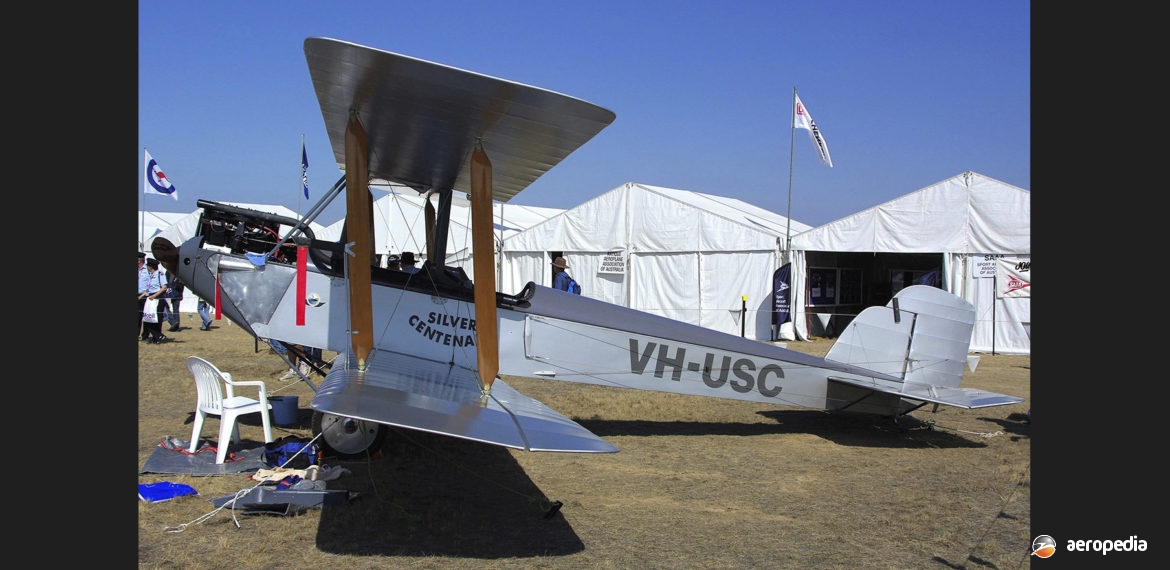Photograph:
Ford Silver Centenary VH-USC (c/n 01) at Avalon, VIC in March 2009 (David C Eyre)
Country of origin:
Australia
Description:
Two-seat light biplane
Power Plant:
One 67 kw (90 hp) ADC Cirrus four-cylinder in-line air-cooled engine
Specifications:
- Wingspan: 9.25 m (30 ft 4 in)
- Length: 7.16 m (23 ft 6 in)
- Height: 2.6 m (8 ft 6 in)
- Max speed: 185 km/h (115 mph)
- Cruising speed: 145 km/h (90 mph)
- Rate of climb: 305 m/min (1,000 ft/min)
- Take-off speed: 56 km/h (35 mph)
- Take-off distance: 61 m (200 ft)
- Range: 563 km (350 miles)
- Empty weight: 445 kg (980 lb)
History:
In the summer of 1928 Mr Selby Ford, who operated a Powerhouse at Beverley, WA, marked out in chalk on the floor of the building the full-size plans of an aircraft he proposed to build. Construction commenced by Mr Ford and, after a short time, he received the assistance of a cousin, Thomas Shackles, and Tom’s sister, Elsie, who sewed the fabric. When the fuselage was completed, a 19 kw (25 hp) Anzani engine was installed, but this provided much less power than was required.
In October 1929 a Cirrus engine from a de Havilland DH.60, which had competed in the Centenary Air Race, was purchased and fitted to Mr Ford’s machine, which had been named ‘Silver Centenary’, commemorating the Western Australian State Centenary.
Following completion, and after two years work, the aircraft was removed from the Powerhouse and conveyed to a nearby paddock where, on 1 July 1930, it was test flown for 25 minutes by Captain C H Nesbit. A further four flights were made that day, with the builders and some of their families as passengers. On 4 July 1930 the machine was flown to Maylands, WA by Messrs Nesbit and Ford, a distance of about 129 km (80 miles), where it was inspected by the well known British aviatrix, Amy Johnson, and Major de Havilland, but they were unable to fly the aircraft due to bad weather.
In mid 1931 a tour was made of country centres. Subsequently the Department of Civil Aviation (DCA) restricted further flying by the aircraft and it was grounded, the reason being that it could not be registered as no plans existed, and none had ever been drawn.
In 1967 the aircraft was placed on display at the Beverley Museum, WA where it remained until 2007 when it was removed and restored to flying status, becoming VH-USC (c/n 01). In March 2009 it was flown across the continent to attend the Australian International Air Show at Avalon, VIC where it won the Champion of Champions Concours d’Elegance Award. However, it did receive a little wing damage caused by storms which hit Melbourne, VIC, and had to undergo some repairs before returning to Serpentine, WA.

